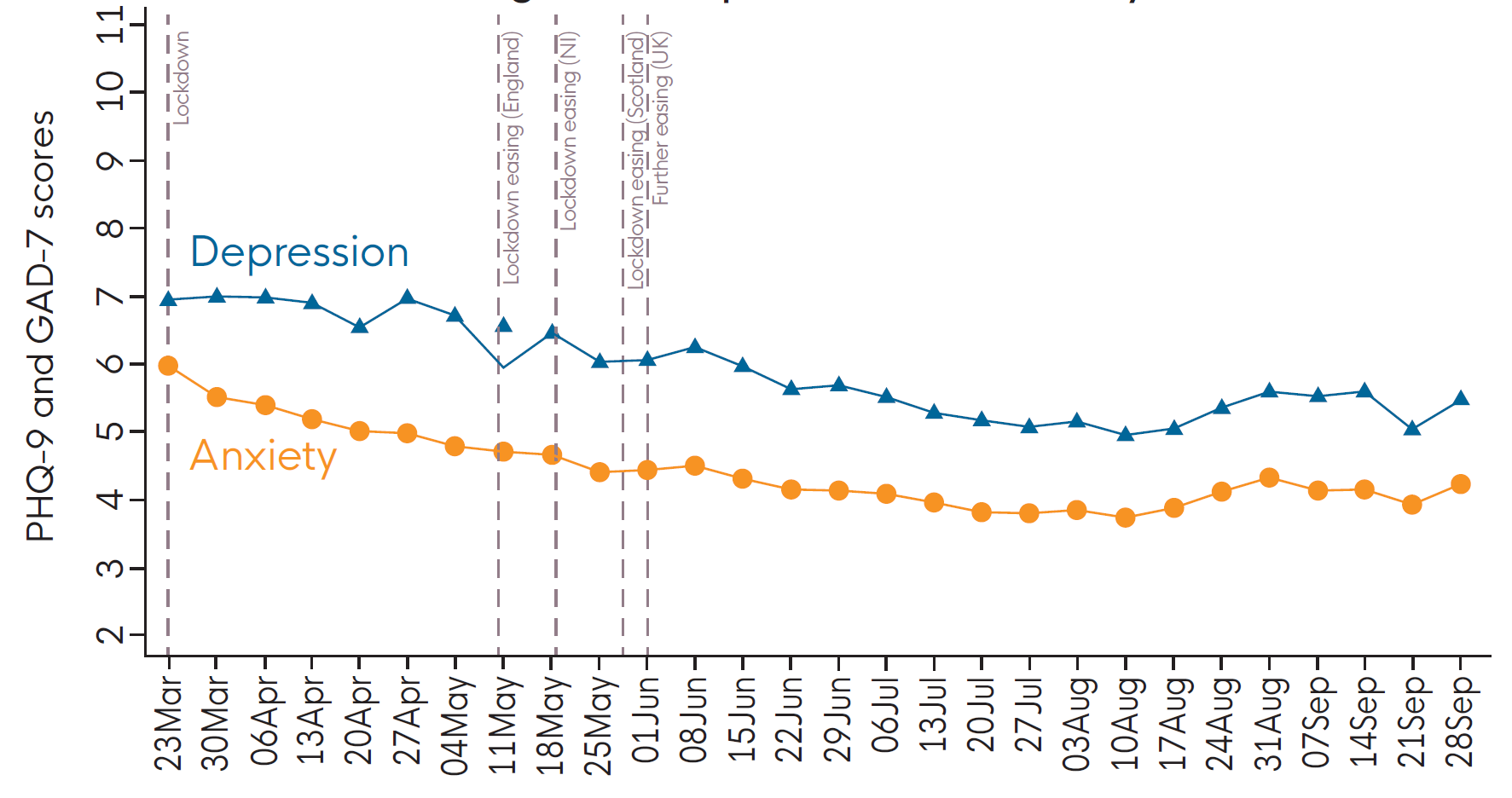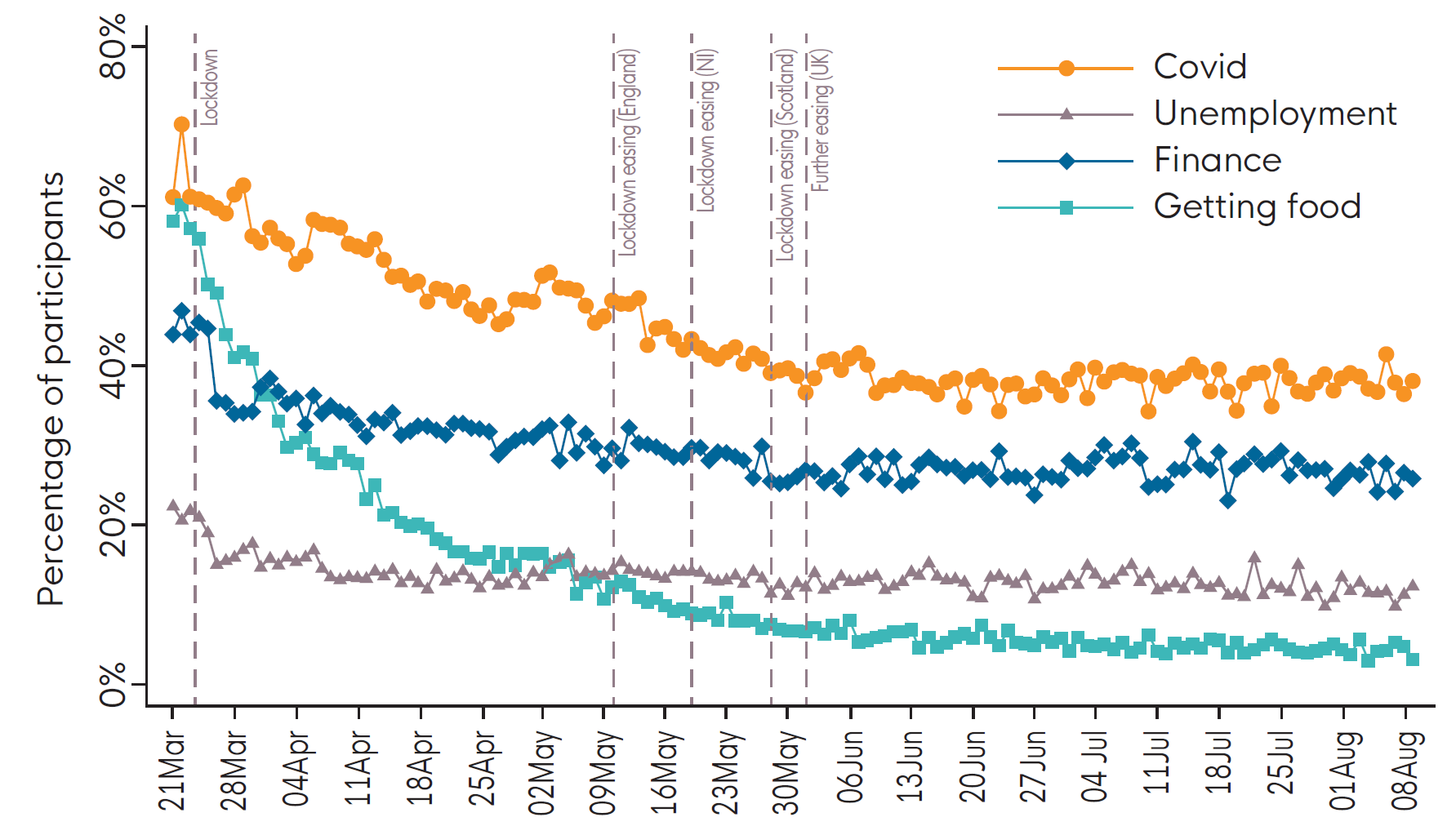As part of our wellbeing data analysis programme, we worked with research partner Daisy Fancourt and her team at University College London on their analysis of their Covid-19 Social Study between March and September 2020. This looks at the data of more than 70,000 people. Our briefing provides insights into how mental health conditions have changed and what the risk factors are that need to be recognised when supporting people’s mental health.
Mental health already a pre-pandemic issue
The mental health of people in the UK was already a concern prior to the pandemic. These mental health problems have increased since the start of lockdown in March, when almost everyone was either directly affected by adverse experiences to their health, jobs and finances or were worried about the future, or both.
Anxiety and depression down from March-April spike
According to the ONS, while levels of anxiety and depression have fallen since the spike in March and April, they still remain above pre-pandemic levels – 49.6% of people reported high levels of anxiety in March, falling to 30% in August, compared to 21% in the last quarter of 2019.
One in five adults (19.2%) were likely to be experiencing some form of depression in June 2020, which is almost double the previous year (9.7%), and worryingly, as we head into the next phase, it may be on the rise again.

Good mental health is critical in supporting overall wellbeing – so what does our analysis of the data tell us about who was affected the most, and what can be done to combat this growing crisis?
Worrying about the future is one of the reasons people are anxious
The Covid-19 Social Study asked participants to report what factors in the prior week had caused them stress. Results confirmed the real and tangible effects the pandemic has had on people’s health, employment status, social lives and relationships – all of which can negatively affect mental health and wellbeing.
But people’s mental health has been affected before those changes have hit us directly. Anticipating changes and worrying about the future is one of the reasons people are anxious. Catching and becoming seriously ill from Covid-19 was the most prevalent cause of worry (40% of people), with worries about finance affecting 1 in 4 people, unemployment 1 in 6 and accessing food about 1 in 20 people.

Who is most affected?
Covid-19 has particularly affected the mental health of people who already had mental health problems and those with low incomes.
The study looked at vulnerable groups and identified that those most likely to experience depressive symptoms were those with:
- Pre-existing physical and mental health conditions, experience of psychological and/or physical abuse, and low social support.
- Low socioeconomic position, which is measured by low household income, employment status, education, household tenure, and household overcrowding.
Anxiety and depression were found to be highest for people that are:
- young adults
- living alone
- those with lower household income
- living with children
- living in urban areas
- those with an existing mental health diagnosis.
What works to improve mental health?
Given how important mental health is for people’s wellbeing, it is more important than ever to make sure that we invest in and prioritise policies and activities that support people’s mental health particularly those that have been helpful in recent months.
How we spend our time matters. Increased time following news about the pandemic was harmful for our mental health and wellbeing, while outdoor exercise and gardening helped to improve people’s mental health during this time.
A recovery plan should also include strategies to:
- Support and restore access to mental health services, particularly for those with pre-existing mental health issues and those out of work.
- Research and develop interventions for younger age groups whose mental health was significantly affected during the lockdown.
As we head into the next phase of strict measures to control the spread of Covid-19, we mustn’t forget lessons from the national lockdown: that the pandemic has had a real and measurable effect on our mental health, that some people are findings things much harder than others, but that there are things we can do to protect and support our wellbeing in the months to come.
How has Covid-19 - and the associated lockdown measures - affected mental health and wellbeing in the UK?
Read the briefing
